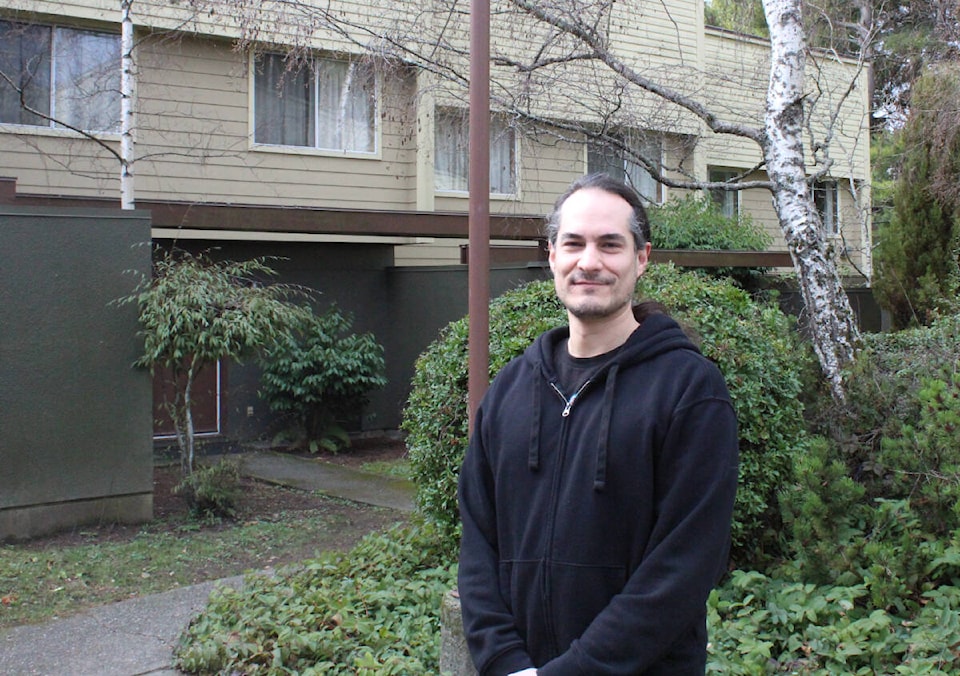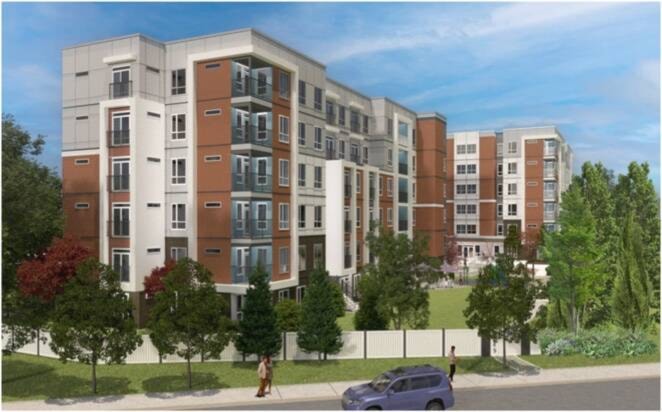Ronda Watson choked back tears when asked how she feels about potentially being forced to move out of the home she has lived in for a decade to make way for a new, larger affordable housing project.
“It’s just emotional,” Watson said on Wednesday (Feb. 13), as she stood in the doorway of the three-bedroom townhouse she lives in with her family. “I don’t know where I’m gonna go.”
Watson’s home on McCoy Road is one of 12 Capital Region Housing Corporation (CRHC) units slated to be potentially torn down to build a proposed 119-unit, $54 million housing complex. Saanich is poised to approve the site for rezoning after unanimous support from council at a public hearing on Tuesday night.
With one more final vote on the rezoning, councillors can clear the project to move on to the next steps — finding a place for the current tenants to live.
Though Watson said she does support the need for more affordable housing — the townhome she has called home for 10 years is a CRHC affordable housing unit after all — the forced change and uncertainty involved have her and her neighbours feeling tense.
“I totally appreciate the need for housing, don’t get me wrong, I am in support of it,” Watson said. “However, I have to worry about myself and my family.”
CRHC representatives assured councillors during the public hearing that the current tenants would be offered a new place at a similar rate, so long as their income has not gone up. This includes first right of refusal in the new building.
“Our obligation is to maintain those rent levels,” said CRHC capital projects manager Rob Fowles. “As long as they’re meeting the income threshold as well.”
Some tenants would likely opt to move in to the new complex, while others may not.
If they do want to move into the new building, they would need to move out while the townhomes are demolished and the new apartments are built, meaning multiple moves. This is not ideal for Watson.
“I don’t want to keep moving,” she said. “It’s just not me, I wanna put roots down.”
But if a unit in the new building is refused, there is no guarantee of being offered a place close by.
Watson said she has become attached to living in the neighbourhood near the University of Victoria.
“I love the area, it’s very convenient and it’s close to friends and close to family and schools,” she said.
Others living in the current townhomes may be open to downsizing due to family circumstances.
Sam Peekeekoot has a child in Grade 11, and so a smaller apartment in the new building might make sense once they graduate.
But like Watson, he doesn’t want to make multiple moves. He just wants to know what his options are and is hoping his kids can finish school before any move is necessary.

The mood of many of the tenants is that they have been left in the dark during the process, left to wonder when they will be told it’s time to leave.
“Everyone I’ve spoken to seems kind of stressed out,” Peekeekoot said.
Peekeekoot also acknowledged the need to upgrade the buildings — built in 1983 — saying they were old and cold and not well insulated. But the unknowns and lack of agency he has in the process is difficult for him and his neighbours.
“It kind of feels more like you’re just being pushed out,” he said. “But I know it’s practical and necessary.”
Councillors were told the current tenants would be receiving assistance finding new homes, though not many details were given because the process would be different for each tenant depending on their situation.
Watson and Peekeekoot were unable to attend the public hearing in person. The one member of the public who spoke during the meeting was mildly supportive of the project, but said calling it affordable housing was “deception” with only 20 per cent of units getting deep rent subsidies.
In the end, many of the councillors expressed enthusiastic support, saying the CRHC had allayed concerns about what will happen to the current tenants.
“One of the conversations I had that came up time and time again speaking with people who were tenants in the current existing building was concerns around relocation and finding homes,” Coun. Teale Phelps Bondaroff said. “And so it’s really reassuring to hear that there’s a pretty strong assistance program.”
Watson listened to the Tuesday hearing and heard that help will be provided. She is hoping to have a better idea of what to expect soon.
“But no information just yet, so we’ll see what happens,” she said.
READ MORE: Victoria, Saanich, Oak Bay must build 10K housing units in 5 years: B.C.



